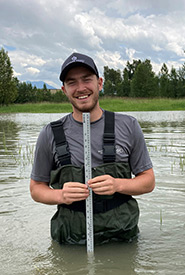Big Backyard BioBlitz: Your cell phone and curiosity can contribute to scientific research

Monarch butterfly (Photo by A. Dabydeen)
Until recently, I thought that "scientific research" was something only done in labs, hospitals and research institutes, by scientists with four different PhDs. Turns out that's not true! When it comes to monitoring biodiversity, community science plays a crucial role in scientific research.
With biodiversity declining at an alarming rate globally, scientists within formal institutions can't do all the research alone. That's where community scientists like us come in; we become the eyes and ears of the researchers, helping to keep track of plant and animal populations and monitor environmental changes.
By spreading scientific research to the wider public, people from all over the world, at all skill levels, can gather data, which can ultimately help us understand ecosystems better and lead to more effective conservation efforts. And that's where this exciting event — the Big Backyard BioBlitz — comes in! This event gives you the chance to contribute to data collection using nothing more than your cell phone.
By involving enthusiastic individuals like us, community science projects can cover larger areas, collect data on a wider range of species, and increase public awareness and involvement in conservation. Our contributions enhance scientific understanding and support informed conservation strategies.
The main goals of the Big Backyard BioBlitz program are to increase public awareness of biodiversity and gather valuable data on species distribution and abundance. Through observations, the scientific community needs people of all ages and backgrounds to explore their local natural spaces and contribute to scientific research. NCC provides participants with resources and tools to identify and document species they encounter, from plants and insects to birds and mammals.
So, how does the program work? Simple: you take pictures or sound recordings of species and upload your findings to an app. It's like a meeting point for all community scientists like you and me, where we can share our discoveries and learn from each other. If you're having trouble identifying a species, don't worry! The online community will provide suggestions to help you out. We're all in this together!
To wrap up, I want to emphasize that every nature enthusiast has the power to make a difference! Whether it's filling data gaps, monitoring biodiversity or getting involved in community-based monitoring or online platforms, there are so many ways to contribute to scientific research. I encourage all of you to actively participate in community science initiatives. Remember, every individual contribution, no matter how small, has a collective impact on safeguarding our natural heritage for future generations. Let's join the movement and become community scientists today!


